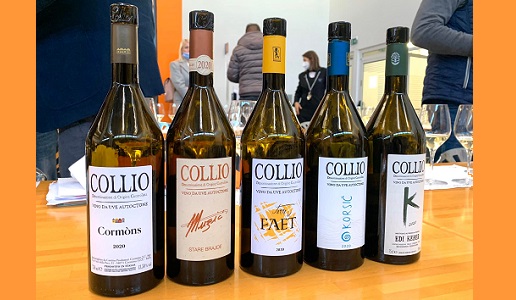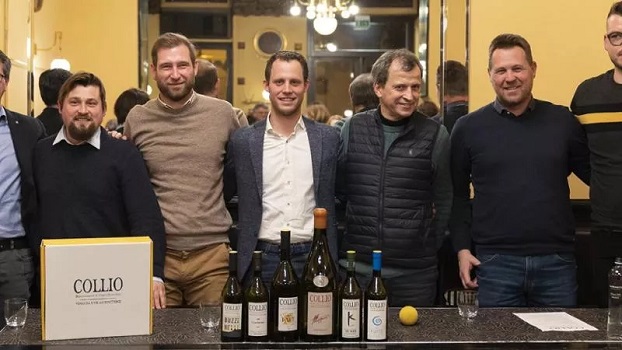Collio Doc, wine from indigenous grapes

While the specification allows all white grape varieties in Collio Bianco Doc, except for aromatic varieties, 7 producers have given themselves more restrictive rules and specify "Wine from indigenous grapes" on the label.
Collio bianco or simply Collio is a traditional, historical white grape. It is mentioned explicitly as early as the 19th century. At that time the predominant grape was Ribolla. The Austrians called it Coglianer.
When, in 1963, the Wine and Cherry Route was born, the leaflet presenting the initiative, listing the wines, mentions Collio wine in first place, indicating its component varieties: Ribolla gialla, Tocai Friulano and Malvasia istriana. In 1964 the Consortium for the Protection of Collio Wines was founded, and with recognition by Presidential Decree in 1968, the composition of Collio Bianco was made official: Ribolla gialla (45-55%), Malvasia istriana (20-30%) and Tocai friulano (15-25%). It is the most produced wine in the area, although very little goes into the bottle and is quickly surpassed by monovarietals. In 1990 the percentages change, all varying between 15 and 55 percent. With Marco Felluga's presidency in 1955, all varieties, excluding aromatics, are opened up. Curiously, Sauvignon is not defined as aromatic.
While openness allows for more Collio Bianco labels, the wine becomes unpredictable for the consumer due to the different varietal composition that each producer adopts.
 In more recent years, with Robert Princic as president, an attempt was made to recover wine with only three varieties, but the project was lost along the way. Then four wineries, Cantina Produttori di Cormons, Terre del Faet, Edi Keber and Muzic, soon to be joined by Maurizio Buzzinelli, Korsic and Komianc Alessio, begin a voluntary path. They agree on a few rules, the most important of which are: exclusive use of indigenous grapes, with Tocai friulano (the variety is still registered as such) more than 50 percent, with Ribolla gialla and Malvasia added, use of the Collio bottle, possibility of aging in wood, no or very short maceration, release on the market at least 18 months after harvest.
In more recent years, with Robert Princic as president, an attempt was made to recover wine with only three varieties, but the project was lost along the way. Then four wineries, Cantina Produttori di Cormons, Terre del Faet, Edi Keber and Muzic, soon to be joined by Maurizio Buzzinelli, Korsic and Komianc Alessio, begin a voluntary path. They agree on a few rules, the most important of which are: exclusive use of indigenous grapes, with Tocai friulano (the variety is still registered as such) more than 50 percent, with Ribolla gialla and Malvasia added, use of the Collio bottle, possibility of aging in wood, no or very short maceration, release on the market at least 18 months after harvest.
The front label, white or clear, bears the name of the COLLIO DOC in large print, followed by WINE FROM AUTOCTONE GRAPES in capital letters. No fancy names to the wine. The reverse side shows the varietal composition and emphasizes the historicity of this wine. The addition of the adjective white is considered superfluous (no one would dream of writing Champagne Blanc or Chianti Rosso).
Finally, stealing an old advertising slogan, it will be possible to say: drink Collio, and you know what you're drinking.

 Italiano
Italiano



















